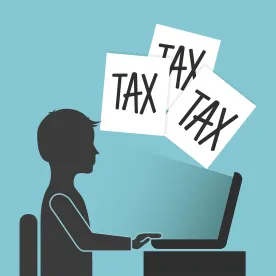Summary
On December 2, 2017, the Senate approved its version of the Tax Cuts and Jobs Act. The Senate Bill includes the base erosion and anti-abuse tax, a new tax intended to apply to companies that significantly reduce their US tax liability by making cross-border payments to affiliates. Given its potential to disrupt the financing of renewable energy projects, taxpayers in the renewable energy sector have been paying close attention to its developments.
In Depth
The Senate approved its version of the Tax Cuts and Jobs Act (Senate Bill) on December 2, 2017. The Senate Bill generally leaves the base erosion and anti-abuse tax (BEAT) unchanged from earlier versions of the Senate Bill. Taxpayers in the renewable energy sector have been paying particular attention to the BEAT, given its potential to disrupt the financing of renewable energy projects.
The House has approved a motion to go to a conference committee to reconcile the House’s tax reform bill with the Senate Bill, and the Senate is expected to consider a similar motion this week. While important policy differences await resolution, it appears that some form of tax reform legislation will likely be enacted before the end of 2017.
In brief, the BEAT is a new tax intended to apply to companies that significantly reduce their US tax liability by making cross-border payments to affiliates. If the cross-border payments reduce a company’s US tax liability to less than 10 percent of its US taxable income (as discussed in more detail below), the BEAT applies. In calculating the company’s US tax liability, certain credits, such as the investment tax credit pursuant to Section 48 (ITC) and the production tax credit pursuant to Section 45 (PTC), are taken into account, making it more likely that such a company is subject to the BEAT. Multinational tax equity investors reducing their US tax liability from cross-border affiliate payments may therefore find that investments in ITC and PTC eligible projects after enactment of the BEAT are much less attractive.
Taxpayers Subject to the BEAT
-
Domestic corporations (other than regulated investment companies, real estate investment trusts or S corporations) that are part of a group with at least $500 million of annual gross receipts (averaged over a 3-taxable-year period) and which have a “base erosion percentage” of 4 percent or higher for the taxable year:
-
In simplified terms, large multinational corporations that make payments to foreign affiliates resulting in deductions equal to 4 percent or more of their total deductions are potentially subject to the BEAT.
-
The “base erosion percentage” generally equals the aggregate amount of “base erosion tax benefits” (see below) of the taxpayer for the taxable year, divided by the aggregate amount of the deductions allowable to the taxpayer for the taxable year.
-
-
Foreign corporations engaged in a US trade or business that meet the $500 million gross receipts and “base erosion percentage” tests (described above):
-
However, for purposes of the “gross receipts” test, generally only gross receipts, which are taken into account in determining effectively connected income, are taken into account.
-
General Summary of the BEAT
The BEAT is a tax equal to the taxpayer’s “base erosion minimum tax amount” for the taxable year.
-
In simplified terms, this amount is determined by a formula that compares 10 percent of the taxpayer’s income without taking deductible payments to foreign affiliates into account with the taxpayer’s regular tax liability (taking such deductions into account and reducing by certain credits, as discussed below). If the 10 percent amount is larger, then the BEAT is owed.
The “base erosion minimum tax amount” equals the excess (if any) of (A) 10 percent of the taxpayer’s “modified taxable income” for a taxable year over (B) the taxpayer’s regular tax liability reduced (but not less than zero) by tax credits (other than the R&D credit) allowed in that year.
-
For taxable years after 2025, the percentage in (A) increases to 12.5 percent, and the research & development credit is included in (B).
-
In the case of taxpayers that are members of a US affiliated group which includes a bank or registered securities dealer, the percentage in (A) is increased to 11 percent (13.5 percent for taxable years after 2025).
“Modified taxable income” means the taxpayer’s taxable income for the taxable year, determined without regard to (A) any “base erosion tax benefit” with respect to any “base erosion payment” or (B) the base erosion percentage of any net operating loss deduction allowed under Section 172 for the taxable year.
-
A “base erosion tax benefit” generally means any deduction that is allowed with respect to any “base erosion payment,” such as depreciation and amortization deductions.
-
A “base erosion payment” generally means any amount paid or accrued to foreign persons that are related parties for which a deduction is allowed, as well as a payment to a related foreign person to acquire depreciable or amortizable property.
-
Base erosion tax benefits are disregarded if withholding tax under Sections 1441 or 1442 is applied to the base erosion payment, modified to the extent that reduced rates of withholding are applied under an applicable income tax treaty.
-
“Related party” generally means any 25 percent owner of the taxpayer, as well as any person related to the taxpayer or any 25 percent owner of the taxpayer.
-
Special rules apply for payments to expatriated entities, certain payments for services and “qualified derivative payments.”
-
“Qualified derivative payments” generally means payments made by a taxpayer pursuant to derivatives that the taxpayer marks to market and on which the taxpayer recognizes ordinary income.
Concerns for Renewable Energy
-
Tax equity investors—such as large multinational companies and banks—may need to consider the potential application of the BEAT.
-
The BEAT could affect investors’ decisions with respect to future ITC and PTC projects. It could also have an impact on the value of existing projects that will continue to generate PTCs after the enactment of the BEAT.
-
Because the BEAT determination is made annually and involves complex calculations, potential tax equity investors may not know whether they will be entitled to the full benefit of PTCs and ITCs in a given year.
Effective Date
If enacted, the BEAT would apply with respect to base erosion payments paid or accrued in taxable years beginning after December 31, 2017.






 />i
/>i
